Plastic Pollution
Our rivers are full of plastic! This is how we get it clean again
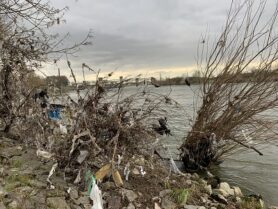
Figure 1, Waste in the river Maas – Credits: Clean Rivers
Every spring, the Clean Rivers organization, together with a large group of volunteers, counts the number of pieces of waste along the Dutch rivers.
At the beginning of this month (October 2020) the results of the spring 2020 cleanup were announced. During this action more than 80,000 pieces of waste were found, that is 450 pieces of waste per 100 meters of riverbank! This
than 90% plastic. A large part of this (more than 15%) consists of plastic drink, candy, snack and crisps packaging. The rivers are therefore full of waste that flows towards the oceans!
waste (figure 1) consists of no less
You probably know a number of major problems with plastic in the water. Nature cannot break it down and so (sea) animals get entangled in it. Also fish eat the small pieces of plastic. The same fish is part of our food chain, so we also eat plastic. It is not yet well known what effects eating that plastic has, but it is not healthy.
Fortunately, there are companies in the Netherlands that specifically focus on cleaning up waste in the rivers. With the following special inventions they help to clean our rivers.
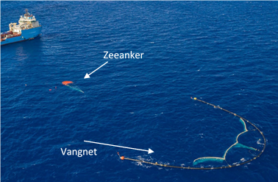
figure 2, The Barrier – Credits: The Ocean Cleanup
The Ocean Cleanup
You may have heard of Boyan Slat. He started at his secondary school in Delft with a project to remove floating plastic from the oceans. Eight years later he had his own company, The Ocean Cleanup, with which he further develops his ideas.
You may be familiar with his project to clean up the oceans with the “Barrier” (see figure 2). A large safety net that slowly moves through the ocean due to a combination of the current in the ocean and a sea anchor. This safety net “travels” “slower than the current in the ocean itself. As a result, the plastic is “automatically” collected.
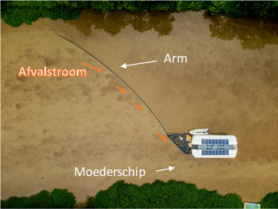
Figure 3, The arm of the Interceptor together with the mothership in the Cengkareng Drain (Jakarta) – Credits: The Ocean Cleanup
This system uses ocean current and therefore does not work in the river. The Ocean Cleanup, The Interceptor, has been specially developed for this purpose. The Interceptor (figure 3) removes plastic from rivers.
The operation of the Interceptor is not very complicated. The fully automatic, solar-powered collection site, the Interceptor’s “mother ship” (Figure 2), receives the waste that flows down the arm via a conveyor belt (Figure 4). The waste then ends up in large bins that can easily be collected by another ship.
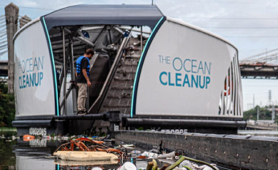
Figure 4, The Interceptor with Conveyor Belt – Credits: The Ocean Cleanup
One of the developers of the arm was Mr. Geraedts. He says that a lot of research was needed to make the arm.“For example, we first designed the arm of both the Barrier and the Interceptor on the computer. We (the designers) can then simulate the arm with special software ”, says Geraedts. “Take, for example, the temperature difference between the part of the arm that is in the sun (warm) and the part that is in the water (cold). We were able to simulate this weather condition by means of a computer simulation. This is important because the temperature differences cause deformations in the arm. These deformations influence the shape of the arm, which can reduce the effect of the arm, ”Geraedts continues.
Many problems can be discovered and solved through simulations even before the arm is manufactured. The final design that is tested therefore has fewer problems. That ensures that the arm can be deployed quickly.
The Interceptor does have one small drawback: the floating arms cannot cover the entire river, because then they would be in the way for shipping. Yet this does not prevent the Interceptor from being able to collect 50,000 kg of waste from the river every day.
The Great Bubble Barrier
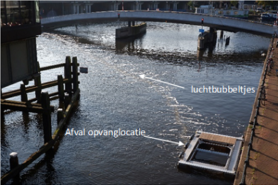
Figure 5, The Bubble Barrier with the reception location in the IJ – Credits: The Great Bubble Barrier
Where the Interceptor uses a floating arm, the Great Bubble Barrier stops waste in a different way. The Great Bubble Barrier’s arm does not float on the water but is just above the bottom. Small air bubbles come out of the arm (see figure 5). These bubbles rise and form a kind of wall for the waste. The shape of the arm and the current in the river ensure that the waste floats neatly to one point where it can be collected.
The first Bubble Barrier was put into use in Amsterdam at the end of last year. This collects about 86% of the (plastic) waste before it can flow from the canals to the IJ, see this video from Waternet.
An advantage is that this system does not block shipping, since it is under water (see figure 6). In addition, it brings extra oxygen into the water, which ensures a better ecosystem and stops the growth of toxic blue algae.
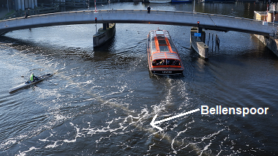
Figure 6, Big and small boats pass the Bubble Barrier – Credits: The Great Bubble Barrier
The Bubble Barrier can be used in virtually all rivers unless they are fast-flowing, because then the waste flows too fast and the bubbles no longer stop the waste.
Due to the placement in the IJ, additional research can be carried out. For example, it has not yet been possible to get heavy objects (such as a car tire) to the side.
Fortunately, the above inventions help to clean our rivers! But the river’s biggest polluter is really our everyday waste. If we could do something about it, it would help enormously. We’re on the right track. For example, new rules will be introduced in Europe on July 1, 2021 to combat the plastic soup. And we can do a lot ourselves! Naturally dispose of the normal waste neatly so that it does not end up in the river. But perhaps the best thing to do is to ask for products made of recycled plastic such as clothing or these sneakers for your birthday, because with these products you help make the above projects possible. And who knows, maybe you are the one who comes up with the following solution for your profile paper.

